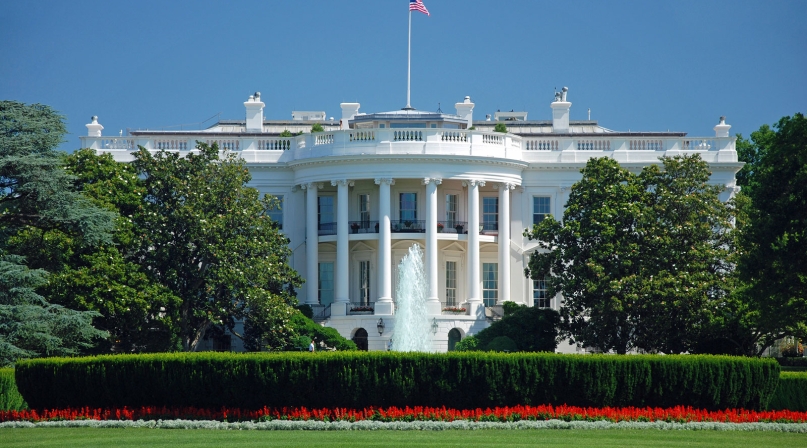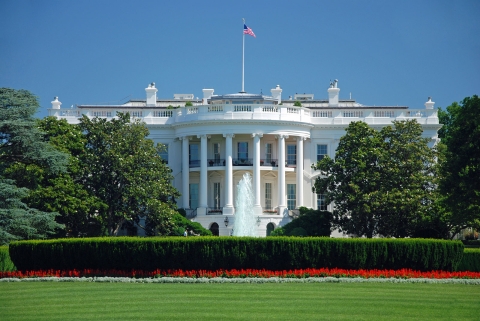President takes executive action in absence of congressional deal on coronavirus relief package
Author

Brett Mattson
Upcoming Events
Related News

On August 8, President Trump released a series of administrative actions, an executive order and three memorandums, to address the expiration of federal unemployment benefits and provide other assistance for U.S. residents negatively impacted by the COVID-19 pandemic. The president took unilateral action due to the congressional stalemate around a potential fifth coronavirus relief package. The executive order is intended to prevent rental evictions and mortgage foreclosures, while the memoranda focus on providing new payroll tax cuts, partially extending federal unemployment benefits with monetary contributions from states, as well as extending student loan payment relief. Nevertheless, the actions taken by the administration do not address NACo’s main priority for COVID relief which is additional flexible fiscal aid for state and local governments of all sizes.
I. Executive Order on Assistance to Renters and Homeowners
The executive order on providing assistance to renters and homeowners directs federal agencies, including the U.S. Department of Housing and Urban Development and Treasury, to review existing authorities and resources and identify any and all available federal funding to provide temporary financial assistance to renters and homeowners who are struggling to make monthly rental and mortgage payments due to COVID-19. Such actions may include providing assistance and other resources to public housing authorities, affordable housing owners, landlords and recipients of federal grant funds in order to minimize evictions and foreclosures. However, the EO does not specifically direct any federal agencies to take actions to mitigate evictions, nor does it reinstate the federal moratorium on evictions included in the $2 trillion Coronavirus Aid, Relief, and Economic Security Act (CARES Act) which expired on July 24, 2020.
II. Memorandum on Other Needs Assistance Programs
The memorandum on authorizing other needs assistance program for major disaster declarations would partially extend the federal pandemic unemployment insurance (UI) benefits implemented under the CARES Act which expired at the end of July. However, the extra federal UI benefit which is on top of states’ regular UI benefit would be reduced from $600 to $400 per week. Of the $400 total, the administration proposed that $300 would be funded through FEMA’s existing Disaster Relief Funds (DRF).
The administration would direct the Federal Emergency Management Agency (FEMA) to set aside funding from Disaster Relief Fund (DRF) to cover the reduced UI benefits. The White House proposed to earmark up to $44 billion of $70 billion in existing DRF dollars, which would last for about five weeks at current UI levels. States would be responsible for the 25 percent FEMA DRF state match, or $100 per UI recipient each week. Governors must submit a federal request to FEMA to receive the extra federal UI payments; it is not automatic. At least $25 billion of the DRF would be set aside to support ongoing disaster response and recovery efforts and potential 2020 major disaster costs.
In addition, the White House would allow states to use their Treasury Coronavirus Relief Fund (CRF) dollars for the $100 state match. However, the National Governors Association notes that states have already obligated more than seventy five percent of CRF dollars, so it is unlikely that states have enough money for the state match. States and localities continue to face significant budget challenges due to reduced revenues so it is unclear how many states can afford or would accept this payment arrangement to continue the federal UI benefits. West Virginia is the only state to agree to the plan so far.
III. Memorandum on Deferring Payroll Taxes
The presidential memorandum deferring payroll tax obligations directs the Secretary of Treasury to use his authority to defer payroll taxes for employees in order to reduce funding taken out of workers’ paychecks and create incentives for work and employment. Specifically, to defer the withholding of federal payroll taxes on an employee’s earned wages of less than $4,000 bi-weekly (pre-tax) beginning September 1, 2020 through December 31, 2020.
The deferment only applies to the employee share that is normally collected and submitted by employers (and the employee side for self-employed). Earlier COVID-19 supplemental law already allowed for postponement of the employer share of payroll taxes. Payroll taxes consist of:
- Social Security taxes at 12.4 percent (6.2 percent paid by employee and 6.2 percent paid by employer); and
- Medicare taxes at 2.9 percent (1.45 percent paid by employee and 1.45 percent paid by employer)
The employee payroll taxes will be deferred without any penalties or interest and will go into effect on September 1, 2020. In the interim, the U.S. Treasury and Internal Revenue Services are now tasked with developing additional guidance to explain how to implement this executive action.
IV. Memorandum on Continued Student Loan Repayment Relief
The presidential memorandum on continuing student loan repayment relief directs the Secretary of Education to provide waivers and modifications to extend student loan repayment relief on loans held by the U.S. Department of Educations until December 31, 2020. Due to the COVID-19 pandemic, the administration initially suspended federal student loan payments and set the interest rate at zero percent for at least 60 days beginning on March 20, 2020. Then Congress included the federal student loan payment relief in the CARES Act which is set to expire on September 30, 2020. This memorandum does not address student loan debt held by private lenders.
NACo will continue its advocacy efforts on securing aid for county governments of all sizes and ensuring maximum flexibility for the funding states and localities received from the Coronavirus Relief Fund included in the CARES Act, along with other priorities to assist counties and their residents in recovering from the negative impacts of COVID-19.

Attachments
Related News

Counties and Railroads: Shared Priorities for the Next Surface Transportation Bill
County leaders from across the country have a vital opportunity to ensure their infrastructure priorities are front and center.

House reintroduces bipartisan legislation to level playing field for rural communities
House reintroduced the Rural Partnership and Prosperity Act, bipartisan legislation intended to advance economic development in rural counties and overcome barriers to obtaining federal funding and resources.

Podcast: Eastern Tennessee counties invest in tourism during shutdown
Sevier County, Tenn. refused to let the government shutdown devastate its fall tourism draw—Great Smoky Mountains National Park. County Mayor Larry Waters describes the lengths he and his neighbors went to keep the park open. And NACo Chief Government Affairs Officer Mark Ritacco offers an outlook on what counties can take away from the shutdown and into the future.